The slogan for 2025’s migration outlook seems to be “Head to Texas, buy a home in the suburbs.”
That’s per Howdy’s “2025 Remote Work Trends and Migration Report”, which shows that one in five remote workers are taking advantage of being able to work anywhere and plan to move this year.
“Change of scene” emerged as the primary driver for relocating (43% of potential movers), but “Cost of living” (37%) remained a significant motivator.
Nearly one-third (29%) of those planning to move are doing so to buy a house, while 24% are relocating to move closer to friends and family, and 14% have cited political reasons.
And the suburbs rule: 49% of 2025’s movers are heading to suburban areas; only 29% are relocating to urban settings, and 22% to rural areas.
Top States Remote Workers Are Leaving
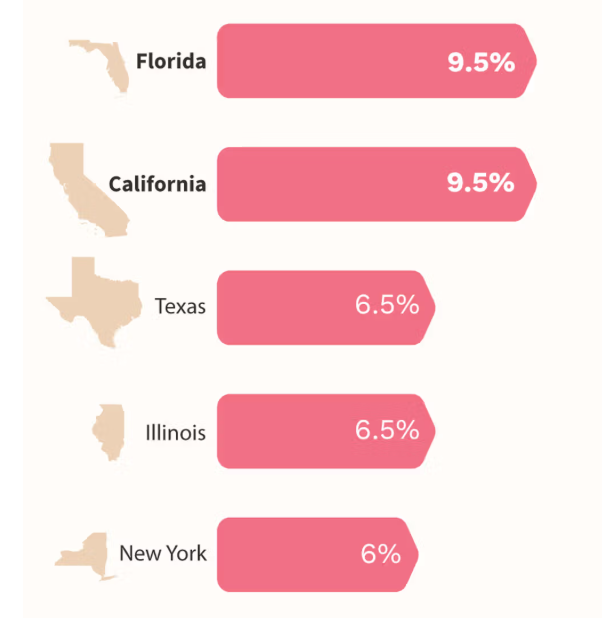
- Florida (9.5%)
- California (9.5%)
- Texas (6.5%)
- Illinois (6.5%)
- New York (6%)
Top States Remote Workers Are Heading
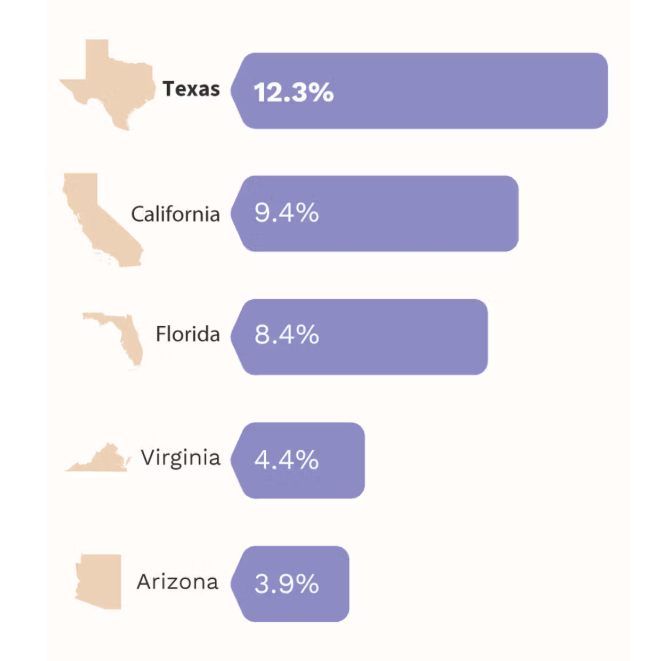
- Texas (12.3%)
- California (9.4%)
- Florida (8.4%)
- Virginia (4.4%)
- Arizona (3.9%)
Top Three Urban Centers Attracting Remote Workers
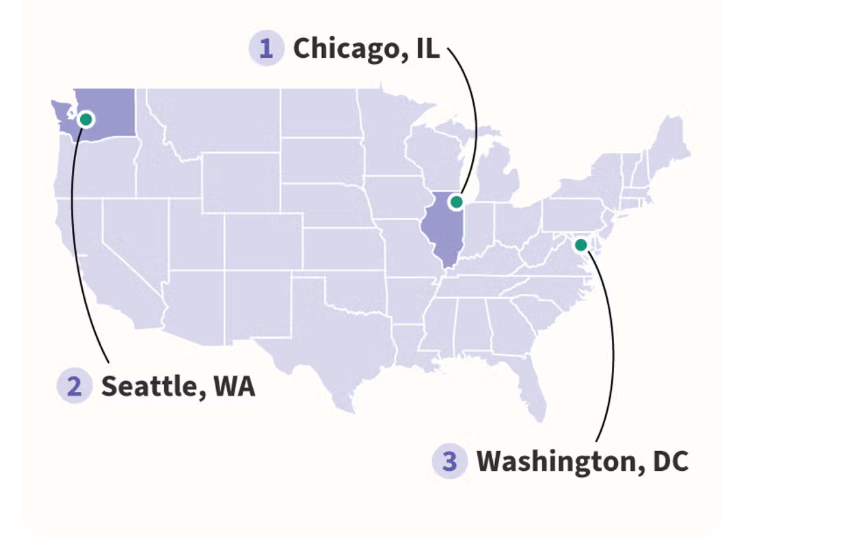
- Chicago, Illinois
- Seattle, Washington
- Arlington, Virginia (Washington, D.C.)
RTO Mandates Causing Personal and Professional Paralysis
Post-pandemic Return to Office (RTO) mandates require employees hired as remote workers to come into the office in either a remote/hybrid work model or full-time capacity. The potential threat of those mandates is causing turmoil in remote workers’ lives:
- 12% of remote workers are putting off purchasing a home due to potential future RTO mandates
- 9% are postponing moving to a new place
- 22% feel they must live within commuting distance of their offices despite working fully remotely
Many remote workers are willing to sacrifice money or piece of mind to keep their flexible status: 59% would accept lower salaries to guarantee permanent remote work, while 56% admit to staying at jobs they don’t like because of their remote team status.
The good news is that an overwhelming 86% of companies now have official policies supporting fully remote work. That said, only 8.6% of workers have personally negotiated remote arrangements despite no official policy, and 5.5% report their employers expect a return to office at some point.
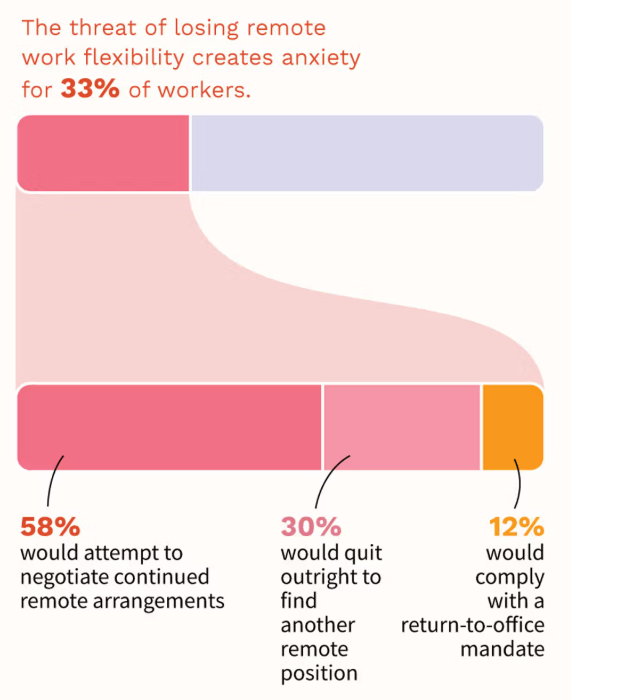
Given contemporary hiring trends, 75% of remote workers are worried about finding another remote position if they quit. And the threat of losing remote work flexibility creates anxiety for a third of workers (33%), and would prompt strong reactions if mandated:
- 58% would attempt to negotiate continued remote arrangements
- 30% would quit outright to find another remote position
- 12% would comply with a return-to-office mandate
Remote Workers Are Driving Real Estate Trends
Remote work is reshaping housing requirements as well, with 32% of remote workers reporting their real estate needs have changed since transitioning to remote work:
- 24% need a home office
- 19% need a quiet space
- 19% need more space overall
- 11% want a backyard
- 31.7% have invested in significant home modifications for remote work, such as dedicated offices and renovations
That said, 54% report no change to their housing needs.
2024 Migration Patterns: Out of the Cities and Into the Burbs
Looking back at last year, the majority (79%) of remote workers stayed in the same place, the rest relocated near or far:
- 10% moved within their state
- 10% moved to a different state
- 0.7% relocated internationally
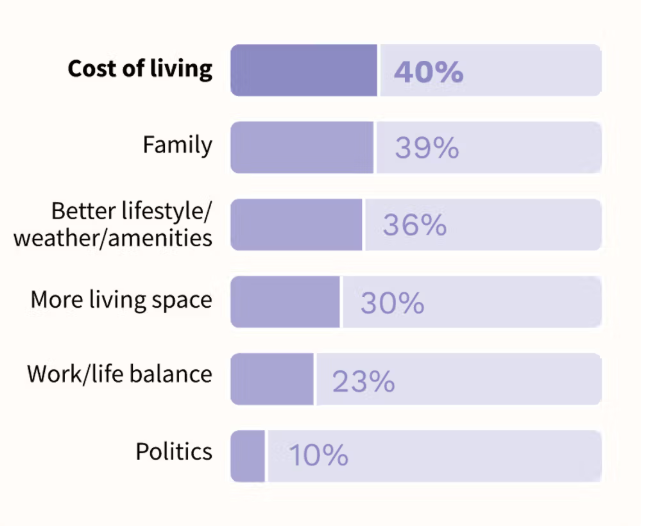
Top drivers of relocation:
- Cost of living (40%)
- Family (39%)
- Better lifestyle/weather/amenities (36%)
- More living space (30%)
- Work/life balance (23%)
- Politics (10%)
The suburban shift also dominated 2024 migration patterns, with 53% choosing to move to suburban areas, 30% to urban locations, and 17% to rural settings. Half (50%) chose single-family homes, followed by apartments/condos (31%) and townhomes/duplexes (10%). A handful of movers chose multi-family homes (3%) or tiny homes (2%).
Highlighting how remote work has shifted many white-collar workers from urban centers to a more dispersed national model, 41% of movers said transit accessibility was no longer a priority.
Digital Nomads and the Future
While the majority (62%) of remote workers say they prefer to stay home, 33% are considering joining the digital nomad lifestyle and 5% are already there. Right now, 7% of remote workers regularly work from different locations, 41% do so occasionally, and the majority (52%) stay in one place.
Where do remote workers see themselves in five years?
- 46% of remote workers plan to stay put
- 30% anticipate moving again within the US
- 5% expect to move internationally
- 19% remain unsure about their future living arrangements
Financial impact for those relocating due to remote work has been largely positive or neutral, with 25% experiencing a cost of living decrease, 8% seeing an increase, and 66% reporting no significant change. Plus, remote work has enabled 20% of workers to live in places they otherwise couldn’t afford.
Click here for more on Howdy’s 2025 Remote Work Trends and Migration Report.






